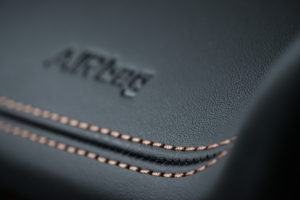On August 1, 2013, Jose Banderas pulled into his driveway after church, placed his 2009 Dodge Caravan in Park, and exited with the engine running, so his wife could listen to the radio. He walked to the rear of the van, opened the lift gate to remove his walker and other items. But the Caravan suffered from a mechanical defect that allowed the parking pawl to be placed between Park and Reverse, and it slipped into gear. As Banderas stood at the rear, the van moved backwards, knocking him down and trapping him under the rear wheels. He died of his injuries. By the time the first responders arrived, the vehicle was in Reverse and officers on the scene were able to replicate the condition.
Rollaway is a perpetual safety hazard. The National Highway Traffic Safety Administration estimates: during a three-year period of 2012-2014, unattended rollaway vehicles killed a total of 360 non-occupants, accounting for about a fifth of those killed in non-traffic crashes each year.
Over the last 45 years, recalls and investigations show that its causes are many. But, the majority of vehicle rollaways are caused by a wide range of mechanical, software and electronic failures. Many vehicle components, such as brake-to-shift-interlock failures, rods, parking pawls, drive shaft breakages lead to rollaways. Software and electrical circuits can also introduce problems that lead to rollaways.
But new technologies, such as electronic gear shifter designs and keyless ignitions are starting to show up in the NHTSA’s investigative portfolio. Fiat Chrysler Automotive (FCA)’s Monostable and dash-mounted rotary dial shifters are good examples of poor shifter designs that mislead the driver about the state of the transmission. The Monostable transmission required the driver to depress a button on the shift lever to move it to the gear position, then the lever springs back to the neutral position. In an investigation, NHTSA found that the Monostable shifter was “not intuitive and provides poor tactile and visual feedback to the driver.” FCA’s rotary dial design was poorly placed, leading some drivers to confuse it for the radio volume knob. Drivers also complained that they couldn’t always tell if the transmission was in Park.
Keyless ignition vehicles also initiate human errors that can lead to a rollaway. In a keyless ignition system, the “key” is the invisible electronic code which the driver delivers to the vehicle using the plastic fob. Once the code enters the ignition, the engine can be activated, but the fob does nothing to shut it down. A driver can depress the Start/Stop button to turn off the vehicle, forget to put the transmission in Park, and walk away with fob. The vehicle stays in Accessory mode, with the electronic key still in the ignition, free to roll.
Regardless of the cause, automakers have two alternative designs to prevent it. Electronic transmissions can be equipped to include automatic parking features that shift the transmission into park when the exiting driver fails to do so. Electric Parking Brakes (EPBs), available for a decade, can prevent rollaways by automatically setting the parking brake.
EPBs replace manual parking brakes and have been promoted as more economical in price and interior space. According to supplier TRW, numerous automakers have implemented this feature, including Audi, Volkswagen, Renault, Nissan, Ford and Honda. EPBs can be used in auto-park features that specifically apply the parking brake in scenarios in which the vehicle transmission is in a gear other than Park and the driver opens the door to exit. For example, the Hyundai Genesis features Auto Hold, which keeps the “vehicle stopped after the driver brings the vehicle to a complete stop with the foot brake and releases the brake pedal.” In the 2014 model year, FCA added a similar feature to the Jeep Cherokee called Safehold.
Fiat Chrysler has also implemented an AutoPark feature, which, instead of applying a parking brake, actually moves the transmission into the Park position. Auto-park type features can be implemented in any vehicle with an E-shift control and minimal software.
Despite the persistence of rollaway, and its many root causes, automakers can reduce it using these alternative designs – yet they are not widely implemented fleetwide.
If you have questions about injuries from a malfunction or safety flaw in a product or vehicle in Florida, call Newsome Melton at 888-808-5977 for free information.


